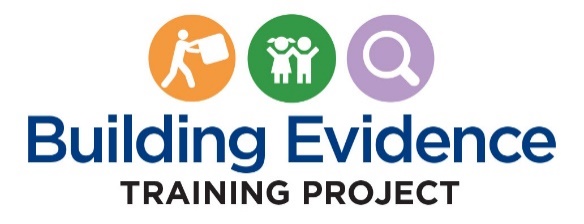Building Evidence Training (BET) Project Usability Testing
Fast Track Generic Clearance for Collection of Qualitative Feedback on Agency Service Delivery
Unit_4_Pre-Post_Test OMB Final
Building Evidence Training (BET) Project Usability Testing
OMB: 0970-0401
OMB # 0970-0401
Expiration Date: 05/31/2021
PAPERWORK REDUCTION ACT OF 1995 (Pub. L. 104-13) STATEMENT OF PUBLIC BURDEN: The purpose of this information collection is to gain feedback on the course content and delivery. Public reporting burden for this collection of information is estimated to average .12 hours per response, including the time for reviewing instructions, gathering and maintaining the data needed, and reviewing the collection of information. This is a voluntary collection of information. An agency may not conduct or sponsor, and a person is not required to respond to, a collection of information subject to the requirements of the Paperwork Reduction Act of 1995, unless it displays a currently valid OMB control number. If you have any comments on this collection of information, please contact the Building Evidence Training Project at: [email protected]
Designing and Implementing Evidence-Supported Interventions in Child Welfare

Unit 4 PRE/POST TEST:
Selecting, Adapting, and/or Developing the Intervention
Questions
Which of the following is not a key factor for teams to consider when implementing an intervention?
Evidence demonstrating improvement in outcomes
Fit with the agency’s structure and circumstances
Readiness of the intervention for implementation
Assessment of the community’s human resources
An agency is preparing to implement a new intervention. Identify one of the implementation supports that should be in place to facilitate the process.
Staff recruitment and selection processes
Peer reviewed and professional journals
Resources for procurement of evaluation consultants
A team of substance abuse specialists
What is used to help determine whether the staff is implementing the intervention as intended?
Community stakeholders
Kinship navigator programs
Fidelity assessments
Communications protocols
Why is it critical to include frontline workers and supervisors on teams? (modified cumulative question)
They perform the role of preparing the evaluation plan.
They have important knowledge about clients and the community.
They can do most of the planning work so other staff can focus on their jobs.
They conduct effective web searches for evidence-supported interventions.
All of the above.
The training and coaching of staff on intervention related activities is an example of:
An adaptation of the intervention
A cost barrier
A root cause
An implementation support
The Diamond County team learned that the intervention they selected was evaluated through rigorous random control trial (RTC) studies in two different jurisdictions that found improved permanency outcomes for children in foster care. This means that:
With the proper implementation supports, the program will improve outcomes in Diamond County.
Diamond County is prepared to implement this intervention.
The intervention has fit with the agency’s structure, staff, and community.
All of the above
Which of the following is a component of a theory of change? (new cumulative question)
Short and long-term outcomes
Teaming charter
Readiness of the intervention for implementation
Agency leaders or program managers
What is important for teams to understand when deciding whether to select or adapt an existing intervention or to develop a new intervention?
Making major changes to an existing intervention may reduce confidence that any supporting evidence is still applicable.
Adaptation can be made to an intervention to respond to the needs of the population being served or the agency’s context.
Agencies that find they cannot successfully select or adapt an intervention may decide that developing a new intervention is the best path forward.
All of the above.
Which of the following is not a key component of an implementation plan?
Definition of the problem and the target population that will benefit
Description of agency leaders’ enthusiasm for the principles of the intervention
Description of the theory of change
Description of the selected intervention including the philosophy, values, and principles
Description of anticipated challenges and ways to address them
True or False: Identifying the Problem & Understanding the Population is part of the Exploration Phase of the Development, Implementation and Assessment Approach. (new cumulative question) A. True B. False
Unit 4 Pre/Post Test Questions
| File Type | application/vnd.openxmlformats-officedocument.wordprocessingml.document |
| File Modified | 0000-00-00 |
| File Created | 2021-01-14 |
© 2026 OMB.report | Privacy Policy